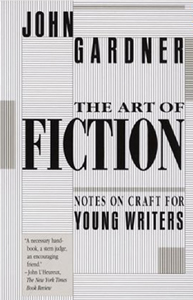
photograph by Debra Tillinger
by David Frankel
I’m afraid this writing tip isn’t original, but it is the exercise that has been the most useful to me as a writer.
It came to me from one great writing tutor via another. It is one of the writing exercises suggested by John Gardner in his book The Art of Fiction. I was introduced to it by Dave Swann at the University of Chichester, for which I will be forever grateful.
I’ve never been a huge fan of writing exercises. This is partly because I’m lazy, but mostly because many of them are geared towards generating ideas for characters, or plots, or getting the writer to experiment – probably the only elements of writing I’ve never had problems with.
 That said, I try new exercises occasionally because, once in a while, I’ve come across one like this that has genuinely helped me to understand and improve the weaknesses in my writing.
That said, I try new exercises occasionally because, once in a while, I’ve come across one like this that has genuinely helped me to understand and improve the weaknesses in my writing.
In my experience, there is a big difference between understanding a theoretical ‘rule’ of writing, and really grasping how it works when you’re scribbling out your masterpiece. Gardner, however, is highly skilled at devising writing exercises that actually help the writer to understand, on a practical level, the mechanics of large abstract ideas, such as ‘show don’t tell’. He said: ‘good writers may “tell” almost anything in fiction except the character’s feelings.’ This exercise, in particular, is a great platform for testing his claim…
The Exercise
The exercise itself looks deceptively simple. It has various versions. This is the one that was first shown to me:
Describe a building as seen by a man whose son has just been killed in a war. Do not mention the son, war, death, or the old man doing the seeing; then describe the same building, in the same weather and at the same time of day, as seen by a happy lover. Do not mention love or the loved one.
This is another version of the same exercise:
Describe a landscape as seen by an old woman whose disgusting and detestable old husband has just died. Do not mention the husband or death.
You get the point…
It’s really Hemingway’s Iceberg theory in action – the superficial events visible above the surface, while the real story remains unseen beneath. In ‘Hills Like White Elephants’, for example, we are left to deduce who the characters are, and what their intentions may be, by their actions and dialogue. It becomes clear through various hints that a possible abortion is the thing not being discussed by the protagonists. Hemingway also left aspiring writers a word of warning, though:
If you leave out important things that you know about, the story is strengthened. If you leave or skip something because you don’t know it, the story will be worthless.
Most importantly for me, was that my attempts at this exercise really helped me to understand the significance of detail, especially in a short story. Gardner speaks of detail as ‘proof’ that your story is ‘true’ (by this, he means believable to the reader). More than any other, this exercise made me realise just how important the element of detail is in establishing this illusion of truth. And how, whether consciously or subconsciously, the short story reader latches on to every detail as a clue to the whole.

